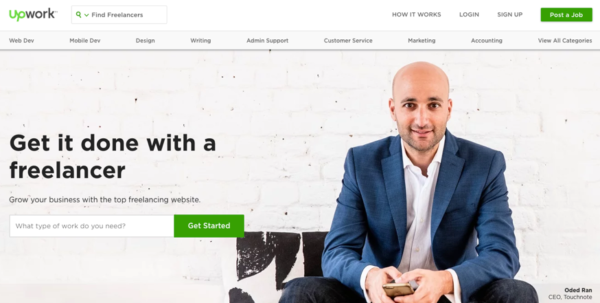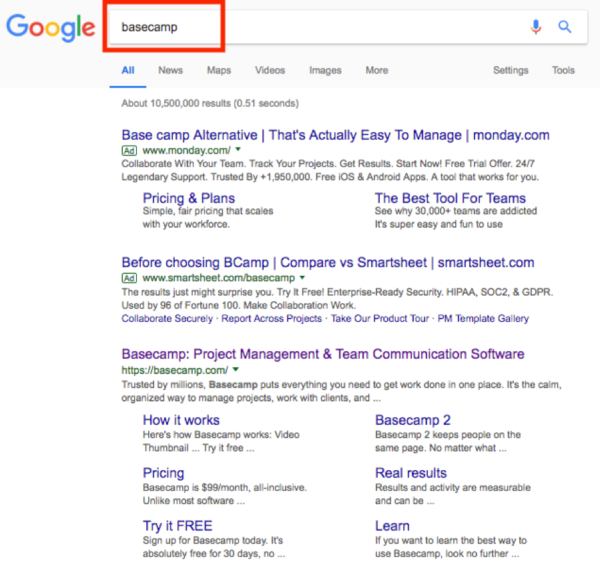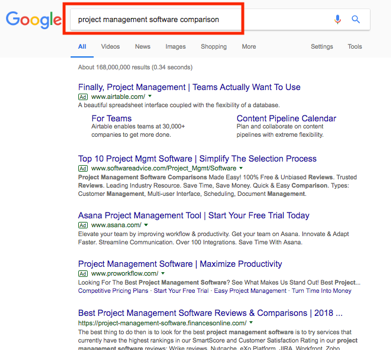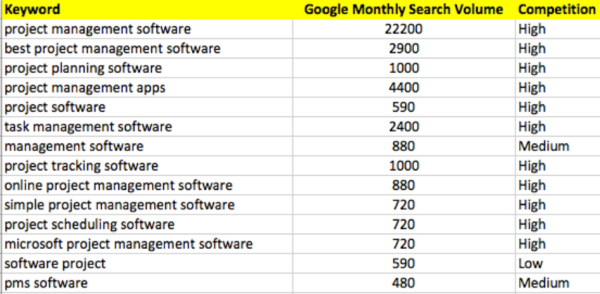 If you want to leverage search intent with SEO keywords on Google and other search engines, it’s best to balance the methods with the false hopes.
If you want to leverage search intent with SEO keywords on Google and other search engines, it’s best to balance the methods with the false hopes.
In a moment, I’ll dive into the big intent types like transactional, informational, and navigational.
Mostly, I want to share a perspective to help you suppress your excitement about choosing the perfect keyword scenarios for SEO.
Maybe you’re like me and think of searcher intent with the end goal in mind – getting that conversion. Don’t we want to minimize traffic that underperforms?
Here is a closer look at types of user intent keywords and some other advice to keep in mind with your keyword choices:
Transactional keywords
- Buy
- Order
- Purchase
- Schedule
- Compare
- Deal
- Discount
- Download
- Shipping
- Coupon
- Review
- Top
- Your brand, product, or service
- Category
- Free trial
- Offers
Informational keywords
- I need to
- How
- What is
- What are
- Best ways to
- Alternatives
- Guide
- White paper
- Study
- Survey
Informational keywords include: I need to, how, what is, what are, best ways to, says @MikeOnlineCoach. Click To Tweet
Navigational keywords
Possible combinations could include your products and services and words like:
- Brand references
- Cost of
- Directions
- Reviews
- Testimonials
- Locations near me
How intent matters
Sometimes intent can cross over in different ways. Check out what Moz founder Rand Fishkin writes about with commercial investigation search. Some companies master searcher intent and others barely find success, especially with transactional keywords.
Upwork, a freelancer hiring site, succeeds across the board. It often ranks well for all types of user intent keyword phrases:


Assurant, an insurance company focused on protecting things from major appliances to mobile devices, falls short with many searcher intent keywords. But it ranks well for some relevant phrases:

Perhaps the lower search positioning occurs because searchers who click find the landing pages basic and not too compelling.

Basecamp, which sells project management software, struggles with user intent except for navigational searches referencing its brand.

For Basecamp, search engine visibility is rare for non-branded phrases:


As you dig in with your user intent plan to lead to results more like Upwork and less like Basecamp, you’ll want to keep several variables in mind.
1. Set priorities
Like everything else that’s imperfect in marketing, you can only do so much at any time. Pick a section of your website, including select products and services. The more you take on, the more likely you’re going to mess up (i.e., hurt good rankings).
2. Decide whether to focus on existing or new content pages
Focusing on searcher intent for existing content is a little more troublesome. If you come up with some new keyword scenarios that you’re sure will boost leads and sales, you’ll run into some hurdles (they can be conquered). Question how the phrase will fit into the existing text. What needs to change? The content header? The SEO page title? Images?
In other words, if you want to introduce a phrase, your overall website content must back it up. How will the calls to action need to be modified or replaced?
If you introduce a new keyword phrase, your overall website #content must back it up. @MikeOnlineCoach #SEO Click To Tweet
Check your rankings. What pages already edge out competitors? Performance is relative, right? Maybe the page ranks for general, top-of-the-funnel phrases and the super high bounce rate won’t win any awards. Or maybe the engagement isn’t half bad. Can the page content be updated to guide users to other pages that will give them more exposure to your brand and maybe compel them to connect with you?
Regardless, are you willing to sacrifice rankings to gain new ones? Understand the risk. What’s the net gain with rankings, traffic, and conversions?
Before you tinker with keyword injections in the content, you should have a firm handle on what natural search traffic landing pages rank well and deliver conversions. Pace yourself.
A new page isn’t quite as problematic. You call the shots, although you may want to honor some architectural standards and templates. Again, think way beyond the phrase. How will the design complement the keywords?
3. Keep search volume in mind
I’m a big believer in embracing keyword phrases hardly anyone uses. If there are only 20 estimated searches a month, do you ignore those keywords? Why? As you weigh new searcher intent keywords, you’re going to find low volume ones.
It all comes back to what you’re selling. Low volume words abound. What if you rank in the No. 4 position for a low volume word and the searcher who clicks signs a contract for a $300,000 order for B2B machinery? It happens.
High volume words should give you pause too. For starters, they’re highly competitive. And they could have multiple purposes. Your product or service may be only a small part of the mix.
Here’s what I do. I check the search engine results pages on Google. First, I cringe when I see those nasty paid ads that push down the organic results. I only like paid ads when needed (and yes, they do their job).
I scan the result to see if the target industry is well represented. I don’t care if some results mix with other business types. I just don’t want my industry to be only one of 10 natural results.
4. Be wary of the high volume, low competition advice
For years, online marketing experts have suggested pursuing SEO keywords that have a high volume and low competition. Sounds good, right? But it’s apples and oranges in a big way.
Pursuing #SEO keywords with high volume & low competition is apples-oranges thinking. @MikeOnlineCoach Click To Tweet
Many people reference Google’s Keyword Planner to capture search volume and a competition rating of low, medium, or high.

Here’s the deal: Competition references advertising, NOT organic searches. Competition is about how many other companies are bidding and doesn’t involve SEO factors like backlinks, page titles, page content headers, domain names, etc.
5. Understand the buyer’s journey
How does your content correspond with where a user might be along the sales funnel? The searcher intent keyword phrases need to match. And keep in mind that B2B and B2C consumers may follow some unusual paths. Ann Gynn goes into great detail with her CMI article, What to Do When Your Buyers’ Journey Isn’t Linear (Hint: It Never Is).
Hopefully, your website is structured around a prospect’s needs and not just page after page detailing how your company is organized.
How does your navigation direct potential customers? For example, what opportunities do they have to call or interact with the chat feature?
I know a wholesale business that explored chat software and bailed. The owners couldn’t figure out whether they wanted to train people to handle chat requests. It’s really not a training issue as much as a company cultural change. Years ago, one client had a chat feature but routinely left it unattended for a couple hours if someone went to lunch. It’s about basic personnel management, not the technology.
6. Leverage paid search
I’m all for using paid search to find data about searcher intent for SEO. Google in all of its absurdity rarely reveals keywords in analytics. It’s more generous in Google Search Console. You’ll see a decent number of keyword phrases there.
Use @Google Search Console to find keyword phrases, says @MikeOnlineCoach. #SEO #Tools Click To Tweet

But Google Ads has an enormous set of words as well.
Here’s the problem. You can see the words people use that prompt Google to display your ad. Maybe you’re at the top of the SERPs. Yeah! Maybe you even get some leads and sales. Super. Try working that keyword into your website content. Maybe you rank 48th. Ouch. Just because it does well in paid doesn’t mean you’re going to crush it with SEO.
But PPC does have value. If advertisers are buying a keyword phrase, it may be worth considering before you run with it or rule it out.
The following provide additional guidance on search intent, including how to identify the best keyword phrase scenarios:
How do you succeed when you select keywords based on search intent? What strategies do you rely on while respecting website design best practices and protecting your search engine rankings?
Searching for a way to intentionally improve your content marketing game? Consider focusing on content technology and register today to attend ContentTECH in April.
Cover image by Joseph Kalinowski/Content Marketing Institute